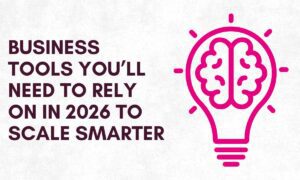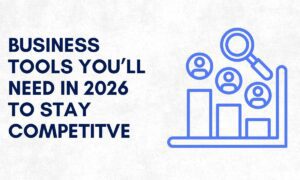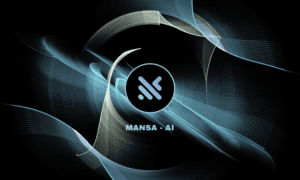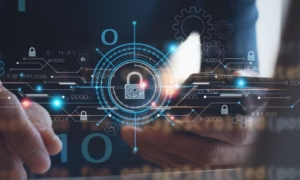Welcome to the future of education, where artificial intelligence is revolutionizing classrooms around the world. From intelligent tutoring systems to virtual teaching assistants, AI has made its way into our educational institutions with promising potential. But amidst this technological advancement, a burning question arises: can AI truly replace teachers? Join us on a thought-provoking journey as we delve into the role of AI in education and explore whether it possesses the power to take over one of humanity’s oldest professions.
Introduction
Artificial intelligence (AI) is a branch of computer science that deals with the development of intelligent machines that can simulate human intelligence. It is a rapidly growing field, with advancements being made every day. AI has already made its way into various industries, such as healthcare, finance, retail, and transportation. However, one industry that is increasingly embracing AI technology is education.
AI in Education
The use of AI in education has been gaining traction in recent years. From personalized learning to automated grading systems, educational institutions are exploring the potential of AI to enhance teaching and learning experiences. One of the key reasons for this growing trend is the need for more efficient and effective ways to educate students.
With traditional teaching methods becoming increasingly outdated and less engaging for students, educators are turning towards innovative solutions like AI to create a more interactive and personalized learning experience. With the help of AI technology, teachers can analyze student data and identify areas where they may be struggling or excelling. This allows them to tailor their teaching methods accordingly and provide individualized attention to each student.
Furthermore, the integration of virtual reality (VR) and augmented reality (AR) technologies in education has tremendous potential for enhancing students’ understanding through immersive experiences. For example, medical students can practice surgical procedures using VR simulations before performing them on real patients.
The current state of AI in education
The use of artificial intelligence (AI) in education is rapidly growing and has the potential to revolutionize the way students learn and teachers teach. AI refers to a computer’s ability to perform tasks that normally require human intelligence, such as problem-solving, decision-making, and learning. In recent years, AI has been integrated into various aspects of education, from personalized learning platforms to grading and assessment tools.
One of the main benefits of using AI in education is its ability to personalize instruction for each student. Traditional classroom settings often have a one-size-fits-all approach where teachers cannot cater to each student’s individual needs. However, with AI-powered adaptive learning systems, students can receive tailored lessons based on their strengths and weaknesses. This allows them to progress at their own pace and focus on areas where they need more help.
Another advantage of AI in education is its potential for data analysis and tracking student progress. By collecting data on students’ performance, AI algorithms can identify patterns in their learning habits and provide insights for teachers on how best to support them. This data can also be used for early detection of academic struggles or even predicting future academic success.
Moreover, AI technology has made massive open online courses (MOOCs) possible, providing access to high-quality education at a low cost. These courses are designed with adaptive algorithms that adjust the difficulty level based on individual student performance. This not only provides access to quality education for those who cannot afford traditional universities but also allows students worldwide to learn at their own pace from top institutions without geographical barriers.
The current state of AI in education is still in its early stages, but its potential to revolutionize learning is evident. It has the ability to personalize instruction, track progress, and provide access to quality education for all. However, it is unlikely that AI will replace teachers entirely; instead, it can enhance their abilities and free up time for them to focus on building meaningful relationships with their students. As technology continues to advance, it is crucial for educators to embrace AI as a tool rather than seeing it as a threat. By leveraging AI’s capabilities, we can create a more efficient and effective education system that meets the needs of all learners.
Can AI truly replace teachers?
As technology continues to advance and become an integral part of our daily lives, the use of artificial intelligence (AI) in education has been a topic of debate. One of the most pressing questions is whether AI can truly replace teachers in the classroom. This begs us to ponder the role of teachers and how AI could potentially change the landscape of education.
To fully understand this question, it is important to first define what we mean by “replace.” Can AI completely take over the duties and responsibilities of a teacher? The short answer is no. While AI can assist in certain aspects of teaching, it cannot fully replicate human interaction, empathy, and critical thinking skills that are essential for effective teaching.
One of the main arguments for using AI in education is its ability to personalize learning experiences for students. With advanced algorithms and machine learning, AI can analyze data from student performance and adapt lessons accordingly. This means that students can receive tailored instruction based on their individual strengths and weaknesses. However, there are limitations to this as well. While AI may be able to identify areas where a student needs extra help or practice, it lacks the emotional intelligence that a teacher possesses to truly understand a student’s unique learning style.
Another aspect where many believe AI could replace teachers is grading assignments and providing feedback. With natural language processing capabilities, AI can read written work and provide instant feedback on grammar, spelling errors, and even content analysis. While this may save time for teachers in terms of grading papers, it cannot replace the personalized feedback that a teacher can offer based on their understanding of each student’s progress.
Arguments for and Against AI in Education
The use of artificial intelligence (AI) has been a hotly debated topic in the education sector. While some argue that AI has the potential to revolutionize the way we learn and teach, others have voiced concerns about its impact on traditional teaching methods and human interaction. In this section, we will explore both sides of the argument.
Arguments for AI in Education:
1. Personalized Learning: One of the main arguments for incorporating AI in education is its ability to provide personalized learning experiences for students. With advanced algorithms, AI can analyze student data and adapt lessons according to their individual needs, pace, and learning style. This can lead to better engagement and improved academic performance.
2. Instant Feedback: AI-powered educational tools can provide students with immediate feedback on their assignments and quizzes, allowing them to identify their strengths and weaknesses in real-time. This not only saves teachers time but also helps students stay motivated by showing them where they need improvement.
3. Accessible Learning: With the help of AI, education becomes more accessible to all learners, regardless of physical or cognitive abilities. For example, text-to-speech technology can help visually impaired students access course materials easily, while voice recognition software can assist students with dyslexia in completing written tasks.
4. Time-saving: By automating administrative tasks such as grading, lesson planning, and record-keeping, teachers can save valuable time that they can then invest in providing one-on-one support to struggling students or developing innovative teaching methods.
Arguments Against AI in Education:
1. Lack of Personal Connection: One of the biggest concerns about using AI in education is the loss of personal connection between teachers and students. Human interaction is vital for fostering critical thinking skills and emotional intelligence, which cannot be replicated by machines.
2. Overreliance on Technology: As much as technology has made our lives easier, it also has its limitations and flaws, which can be detrimental to the learning process if students become too reliant on it. In some cases, students may even lose their problem-solving skills and creativity as they rely on AI to provide all the answers.
3. Cost: Implementing AI in education comes at a significant cost, which many schools and institutions may not be able to afford. This could create an unequal playing field for students from different socioeconomic backgrounds, with those from more affluent schools having access to better resources.
4. Ethical Concerns: There are also ethical concerns surrounding the use of AI in education, such as privacy issues and biased algorithms that may perpetuate discrimination or reinforce stereotypes.
Alternative perspectives: how AI and teachers can coexist
As the use of artificial intelligence (AI) in education continues to grow, there has been much debate about whether AI technology can completely replace teachers. While some argue that AI may eventually take over traditional teaching methods, others believe that there is still an essential role for human teachers to play. In this section, we will explore alternative perspectives on how AI and teachers can coexist in the education system.
Firstly, it is crucial to acknowledge that AI technology has its limitations. While artificial intelligence is undoubtedly a powerful tool with the potential to enhance learning experiences, it cannot fully replicate human interactions and emotions. Teachers provide students with emotional support and understanding that machines simply cannot emulate. The empathetic nature of teachers allows them to connect with students on a personal level, providing encouragement and motivation when needed. This type of emotional connection between teachers and students is crucial for creating a positive learning environment and promoting academic success.
Furthermore, while AI can analyze data and provide personalized learning experiences based on individual student needs, it lacks the ability to understand the context of a student’s life outside of the classroom. Teachers are uniquely positioned to recognize external factors, such as familial issues or mental health struggles, that may affect a student’s performance in school. They can then tailor their teaching approach accordingly, providing additional support or resources if necessary.
Human teachers possess critical thinking skills that are invaluable in education. While AI algorithms are programmed based on existing data sets and patterns, they do not have the ability to think creatively or adapt quickly to unexpected situations. In contrast, teachers have years of experience working with different types of learners and are skilled at adapting their teaching methods to meet individual needs.
Moreover, the role of a teacher extends beyond just delivering content; they also serve as mentors and role models for students. Young minds need guidance from experienced individuals who can inspire them both academically and personally. A machine cannot replace this aspect of teaching.
Conclusion
While artificial intelligence will never fully replace human teachers in education, it has the potential to greatly enhance their roles. By leveraging AI technology, teachers can gain valuable insights into student learning, save time on administrative tasks, and create a more inclusive learning environment. As we continue to explore the role of AI in education, it is important to carefully consider its impact and take steps to ensure fair and ethical use. With responsible implementation, AI has the potential to revolutionize education for the better.



































